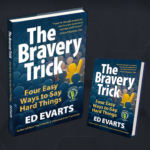It’s best to know if your activities are creating value for your organization or if they’re just providing a lot of busy-work. By conducting a value identification exercise, you can confirm if your activities create value for your organization or not.
Take a moment to think about a key activity/project in which you are currently engaged. Then take a few moments to complete a value identification exercise for this activity or project. An activity tends to be smaller and completed on a recurring basis, while a project tends to be larger and done only once. An effective strategy in completing your value identification exercise is to find a colleague who can help you think through this important information.
The Basics
- What is the name of this activity/project? All activities should have a name so you can easily reference the activity when speaking with others. Give the activity a brief name, unless it is a highly confidential project that warrants a code name.
- How would you briefly describe the activity to others? Your colleagues do not have time to listen to lengthy, rambling, confusing descriptions. As Albert Einstein said, “If you can’t explain it simply, you don’t understand it well enough.” Create a tight description of what you are doing.
- What is/are the business problem(s) this activity will solve? All solutions start with a problem. If you do not know the specific problem you are solving, you may end up with the wrong solution. Develop a tight description of the business problem your activity will solve.
- What does success for this activity look like? In The 7 Habits of Effective People, Stephen Covey identified “Start with the end in mind” as a proven effective habit. Create a compelling, exciting, visionary-like outcome for your activity to keep colleagues engaged and interested.
Risks and Rewards
- What is/are the risk(s) of doing this activity? Any change can create ripples in your work environment that may be risky. This is the way things are. Not anticipating and planning for these risks can be problematic. Identify the risks associated with doing this activity.
- What is/are the risk(s) of not doing this activity? There is an expectation that not doing an activity or project is riskier than doing it. Identify the risks associated with not doing this activity to ensure they are greater than the risks of doing it.
Financial Impact
- What financial driver(s) will this activity impact? In order for the activity to create business value, there must be one or more financial drivers positively impacted. These drivers may be tied to internal financial or external marketplace drivers. Identify the driver(s) that you are seeking to impact that makes the investment of time, energy, and money worthwhile to your organization.
- Can the financial benefit be estimated and, if so, what is it? In order for the value of the activity to be prioritized against other activities that are competing for your organization’s time, energy, and money, you need to estimate the financial benefit that your activity will generate for your organization. Your estimate needs to be based on tangible facts and reasonable assumptions. If identifying a hard number is not possible, at least provide a range representing the positive impact that your activity will generate.
Image by Peggy und Marco Lachmann-Anke from Pixabay
~~~~~~~
Raise Your Visibility & Value: Uncover the Lost Art of Connecting on the Job is available
in AUDIO FORMAT here on Amazon and iTunes
and in HARD COPY here on Amazon and Barnes & Noble.







